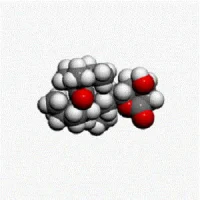Patients with severe sepsis who experience rapid, early deterioration and death are of particular concern. However, given the broad spectrum of clinical presentations and variable rates of disease progression, the early identification of septic patients at increased risk for clinical deterioration remains challenging. New research indicates that initial serum lactate and modified SOFA (mSOFA) score are independent predictors of death within 24 hours of emergency department admission in patients with severe sepsis.
"These findings may have implications for risk stratification of patients with severe sepsis or septic shock in addition to early identification of those in whom aggressive management may be needed to decrease risk of death or inform alternative goals of care," according to the study published in Journal of Critical Care.
Study authors conducted a secondary analysis of two completed prospective studies of adult ED patients with severe sepsis or septic shock. The primary outcome for the current study was early death, defined as death within 24 hours of ED presentation. A total of 410 patients met the inclusion criteria and were included in the final analysis.
Out of 410 severe sepsis admissions, 20 patients experienced early death. These patients demonstrated significantly higher initial lactate and mSOFA scores, were less likely to normalise their lactate, had lower initial pH, and more frequently had early positive blood cultures. Multivariable logistic regression identified initial serum lactate level and mSOFA score as independent predictors of early death. A repeat lactate ≥ 5 mmol/L had a sensitivity of 55% and specificity of 89% for early death.
The role of initial serum lactate is well established as a predictor of adverse outcomes in patients with sepsis and the study results are consistent with previously published literature.
"In this analysis, patients with early death had markedly elevated initial serum lactates and repeat serum lactates. We also identified based on our ROC [receiver operating characteristic] analysis that a threshold for repeat lactate of 5.0 mmol/L was strongly predictive of early death. This may have particular utility in the identification of patients in need of aggressive interventions and novel therapies to improve outcomes," the authors write.
Interestingly, increased early mortality was not associated with differences in ED treatments or interventions. In two of the cornerstone treatments for septic shock, fluid resuscitation and antibiotics, researchers found no differences in intravenous fluids administered at 6 or 24 hours or with time to initial antibiotic administration in the early versus later deaths. In addition, the time to administer vasopressors for shock was also similar between the groups.
"These findings suggest that persistent hyperlactataemia may be an indication for a broader range of therapies including those that are less commonly utilised in the early stages of sepsis, such as inotropes. Therefore, this high-risk subgroup may represent a potential target patient population for novel therapies," the authors add.
Source: Journal of Critical Care
Image Credit: Martin Grandjean
References:
Javed, Adnan et al. (2017) Clinical predictors of early death from sepsis. Journal of Critical Care. doi.org/10.1016/j.jcrc.2017.06.024
Latest Articles
Sepsis, mSOFA, initial serum lactate, hyperlactataemia
New research indicates that initial serum lactate and modified SOFA (mSOFA) score are independent predictors of death within 24 hours of emergency department admission in patients with severe sepsis.










